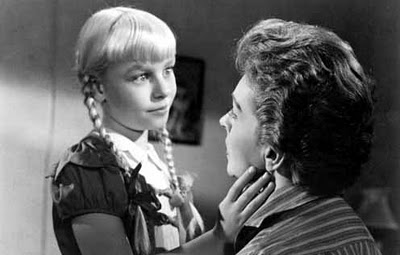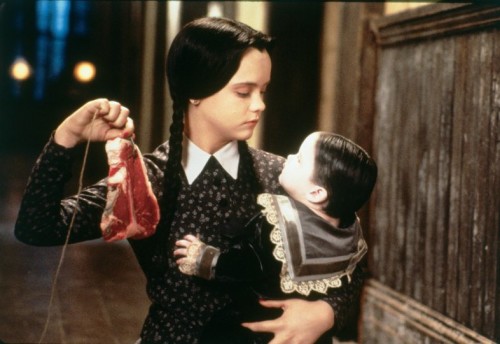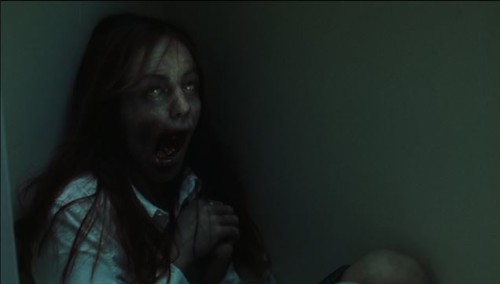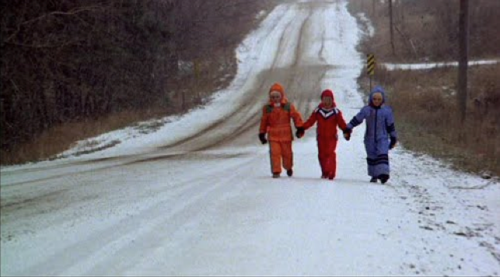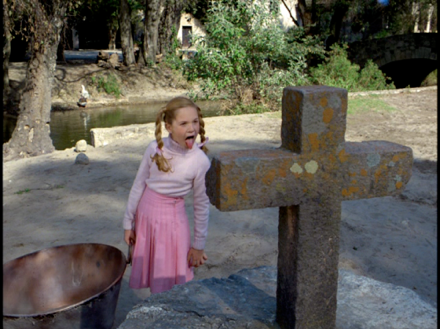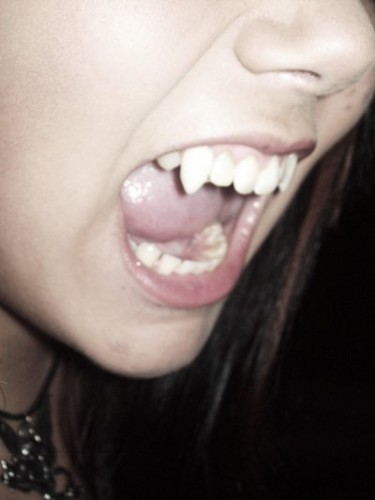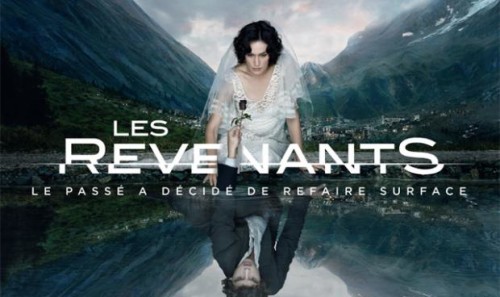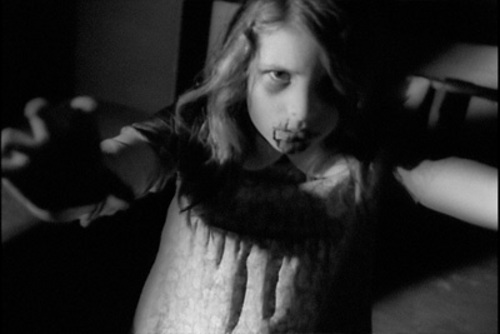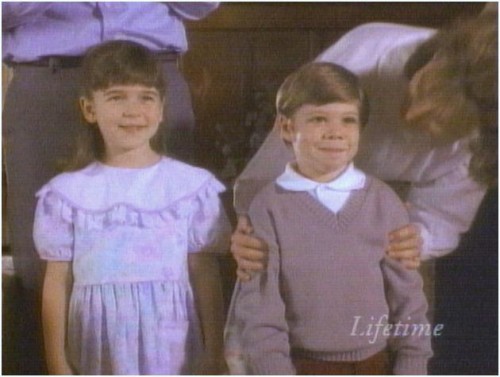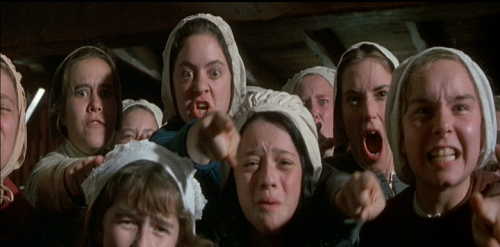Fucking with Fate: Sexuality, Loss, and Irreversibility in The Returned by Tina Giannoulis
The first episode opens on a 15-year-old girl, the eponymous “Camille” (Yara Pilartz), as she finds herself alone at dusk in the mountains above her town. She starts her journey back home, disoriented and a little confused but otherwise intact, despite having died in a school bus trip four years prior.
Little Girls in Horror Films: Setting the Stage for Female Double Standards by BJ Colangelo
Little girls are often what we associate with innocence. Girls are said to be born out of “sugar, spice, and everything nice,” which attaches a stigma to women from birth that is unrealistic. Society is conditioned to believe this ridiculous myth, which changes the way we value little girls over little boys.
The Terror of Little Girls: Social Anxiety About Women in Horrifying Girlhood by Leigh Kolb
Horror films hold a mirror up to these ideals, distorting the images and terrifying viewers in the process. The terror that society feels while looking at these little girls echoes the terror it feels when confronted with changing gender norms and female power.
Alarming Innocence: The Terror of Little Girls in The Crucible by Laura Shamas
Miller’s examination of the Salem Witch Trials, held in the Province of Massachusetts Bay from 1692-3, depicts the internal, secretive drive of a New England witch hunt, and how paranoia quickly escalates to devastate a marriage, a family, neighbors, and eventually, to cripple an entire community. The actions of little girls set it all in motion.
The Beth Thomas Story: How a TV Film and Documentary Captured a Child Enraged by Kim Hoffman
Tim and Julie didn’t know about the sexual abuse Beth had been subjected to as early as 19 months old by her father. They didn’t know she was suffering from Reactive Attachment Disorder, a condition that surfaces from past trauma and neglect into oceans of disturbing, detached, unresponsive, and apathetic behavior. They couldn’t possibly know that a young girl could be filled with so much—that much rage.
“The Demon” in Oranges Are Not the Only Fruit by Ren Jender
Oranges Are Not The Only Fruit, a BBC production from 25 years ago, adapted by author Jeanette Winterson and based on her own autobiographical novel, is one of the few films in theaters or on TV which contains both a coming-out story and another parallel, equally compelling story. Seven-year-old, red-haired “Jess” (played as a young child by Emily Aston and as a teen by Charlotte Coleman) grows up in a small town in Lancashire, in the north of England, with her strict Pentecostal adoptive parents; her father, always in the background, is silent and her mother (Geraldine McEwan), front and center, quotes the Bible and denouncing the “heathens” all around her.
Self-Made Orphan: Why We Cringe When Karen Cooper Snacks on Her Dad by Julia Patt
The crumbling cement in this relationship is the injured little girl lying on the table downstairs. Her parents are united only on the question of her safety. Unsurprisingly, Karen has no voice or agency of her own. The adults perceive her as entirely helpless— “Maybe it’s shock,” her mother says of her condition. “She can’t possibly take all the racket…”
Vampire Girls: Claudia and Eli by Kathryn Diaz
In the great monster mash team of terrifying children, the vampire girl is varsity captain. On the one hand, they are dolls forever: trapped in their prepubescent bodies for hundreds to thousands of years without a single curl losing its bounce. On the other hand, with hundreds of years of life come hundreds of years of experience, knowledge, even maturity.
Satan in a Frilly Dress by Gloria Endres de Oliveira
However, this form of social shaming does not seem to prevent some of his young disciples from subverting their supposed childlike innocence: when the town is suddenly riddled by mysterious and violent crimes, it is suggested that the children have something to do with it, their leader being Klara, a 13-year-old angel-faced blonde and the pastor’s eldest daughter.
The Volatility of Motherhood in David Cronenberg’s The Brood by Eli Levy
For Cronenberg, Candy represents the symbolic order and influence of the father, precisely what Nola wishes to eradicate. Candy is supposed to come “home to mommy” and have no fatherly influence. The characters in the film are defined by rigid gender constructs, or alternatively, through their attempts at living up to them.
“But I Do!”: Releasing Repressed Rage in The Ring by Rebecca Willoughby
These abstract symbols not only frighten, but link events in the real world to Samara’s cursed tape: this particular creature recalls the “spiders, snails, and puppy-dog tails” that little girls are decidedly not supposed to be made of. When Rachel engages this videotape, notably created by the patriarchal forces that might be seen to repress Samara, she sees Samara in a sparse hospital room in fast motion, staring at the clock as its hands whirl around and around.
Wednesday Addams, Smasher of the Patriarchy by Deborah Pless
She’s not nice, she’s not fragile, she’s not kind or sweet or even vaguely pleasant. She’s mean and angry and cynical and disaffected and sarcastic and snide and everything I wanted to be as a child. She’s also an intersectional feminist. And a little girl. She’s the best.
Femme Fatale in a Training Bra: Orphan‘s Esther and The Questionable Motives of Lolita Haze by Elizabeth Kiy
Movies where young girls are victimized are generally our idea of real world horrors, movies that are too sickening to sit through, but as much as they unsettle us, we expect them. We see these stories in the news every day. What is made truly terrifying and shocking in our culture is the advanced young girl already aware of her powers, and what she can get with them–a girl who knows how to move, how to dress, and how to manipulate.
